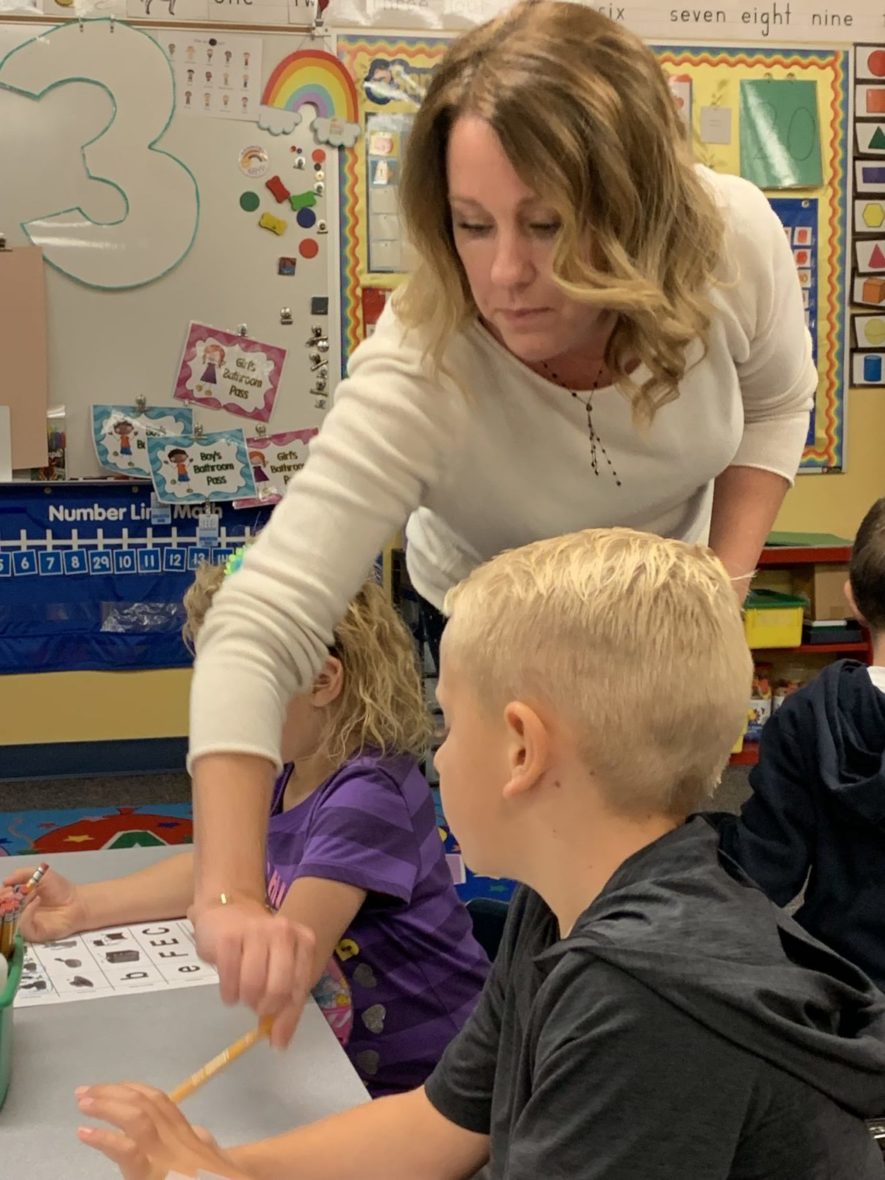KUNA — Last school year was a new beginning for kindergartners in Alyssa Townsend’s class — and for Townsend herself.
It was her first year teaching a full-day kindergarten class, and Townsend wasn’t sure what to expect. By the end of the year, Townsend said she was astounded and excited by what she saw from her students. “They just flew, and they just loved it.”
As Kuna launches its second year of all-day kindergarten, the jitters have given way to optimism. School officials are banking on dividends down the road — for the district, and more importantly, for its 5,500 students. The district is betting on that success, and there’s some risk involved.
For Superintendent Wendy Johnson, kindergarten has long been a vexing problem. For years, the district operated on a traditional schedule, with half-day kindergarten sessions in the morning and the afternoon. During the Recession, Kuna was forced to cut transportation costs, including the midday kindergarten bus routes. Kindergartners attended full-day classes, every other day. The students didn’t lose out on any classroom hours, but they didn’t get the repetition that comes from day-in, day-out instruction.

And along the way, Kuna officials noticed something else, unrelated to the school calendars. Fewer kindergartners were arriving in the fall with the skills they needed for school. More and more, teachers were playing catchup from the start.
The transition to all-day kindergarten can be tough, Townsend said, especially for kids who have never been to preschool. But as students adjust to their new routine, the benefits of a longer school day begin to kick in. Teachers have more time to give at-risk students the small-group instruction they need. And teachers benefit from working full-time with a single class, rather than two half-day classes.
“It makes a big difference,” said Townsend, who is in her ninth year of teaching kindergarten. “You know the kids really well. You know the families really well. You know what’s going on in the home.”
The 2018-19 Idaho Reading Indicator scores show promise.
Only 33 percent of kindergartners at Townsend’s Reed Elementary School scored at grade level on the fall IRI, compared to a statewide average of 45 percent.
But the Reed students picked up some ground. By spring, nearly 53 percent of kindergartners were at grade level — an improvement of nearly 20 percentage points. Statewide, kindergarten IRI scores improved by 18 percentage points.
Now these students are in first grade, and Christy Hall is already noticing the difference. She can tell her students got more out of kindergarten — and the dreaded “summer melt,” the dropoff in classroom skills, is less of a problem.
“I’ve got readers,” said Hall, who is in her 18th year teaching first grade.
Amie LaRue’s two sons attended kindergarten at Reed. Her older son, now in seventh grade, was there for the full-day, every-other-day calendar. Her younger son in Townsend’s all-day class last year. LaRue could see the differences as well. Her younger son learned more and retained more — and even though he’d never been in preschool, he adjusted quickly to the kindergarten routine.
“We all underestimate their readiness,” she said. They’re sponges at this age.”
Like other districts around the state, Kuna is using state literacy dollars to bankroll the transition to all-day kindergarten. A voter-approved supplemental property tax levy covers one staff position, Johnson said, but literacy dollars cover the balance.
But there’s a tradeoff.
Districts and charters can use their share of the $26 million in literacy money to provide full-day kindergarten, but they’re still required to provide extra help for at-risk readers through third grade. That means the third-grade teachers are adding the extra reading help to their workload — in hopes that, in a couple of years, more students will show up for third grade with the reading skills they need.
There’s also a catch.
Idaho distributes its literacy funds based on IRI scores. Schools with a higher percentage of at-risk readers receive a bigger share of the money. If all-day kindergarten works in Kuna, and reading scores improve, the district’s literacy funding would decrease.
“That has me nervous,” Johnson said.
More reading: Most Idaho school districts offer all-day kindergarten — but they find different ways to pay the bills.
